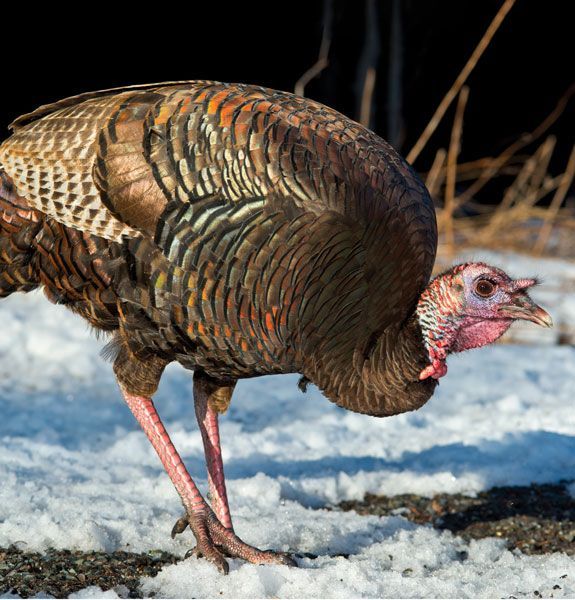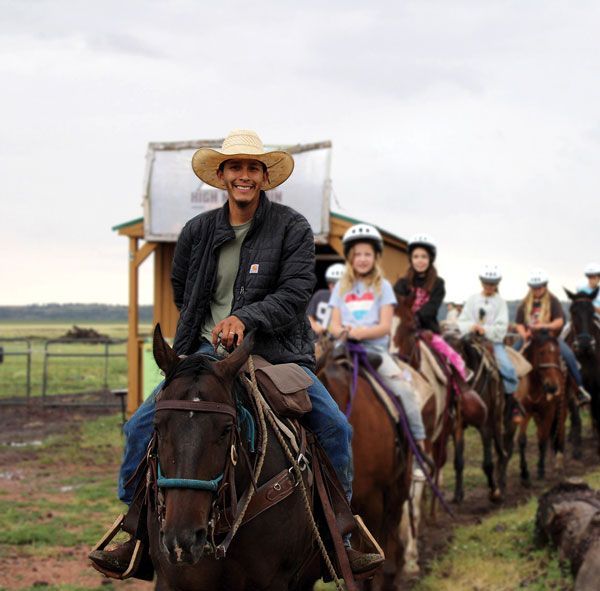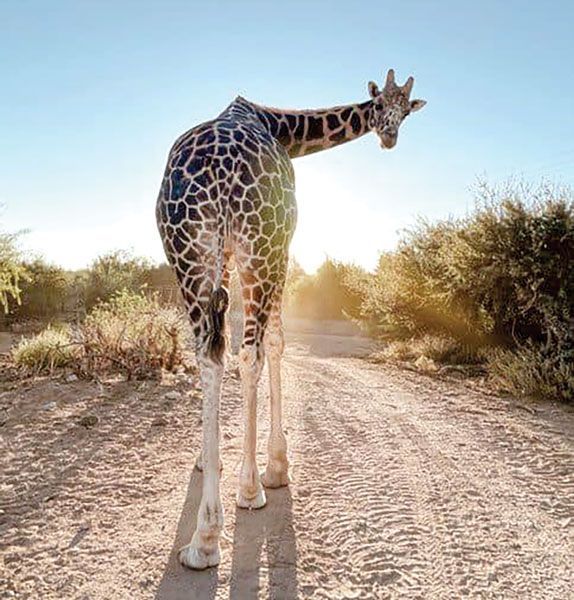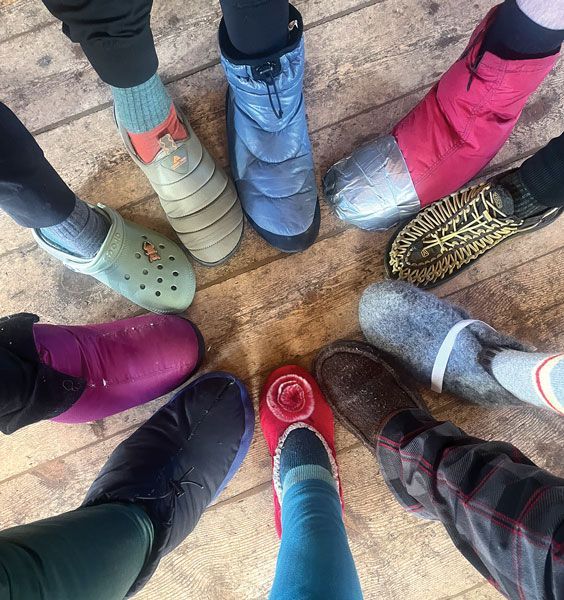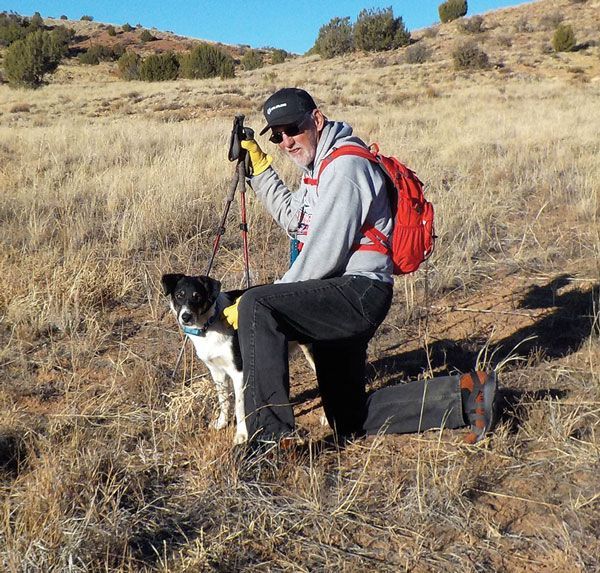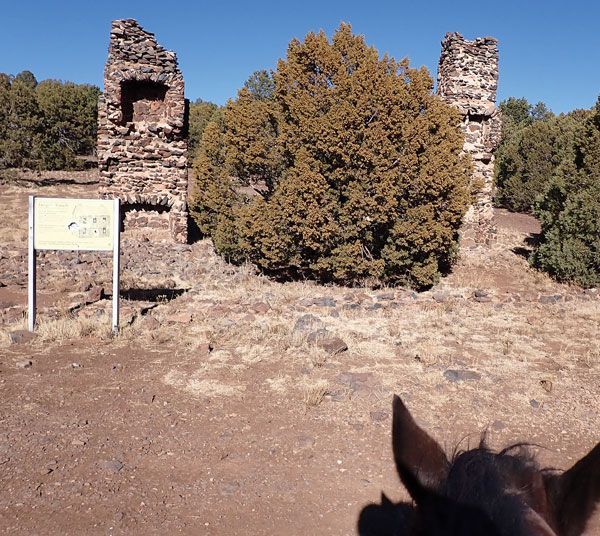ARIZONA GAME & FISH DEPARTMENT PINETOP POND AND WETLAND PROJECT
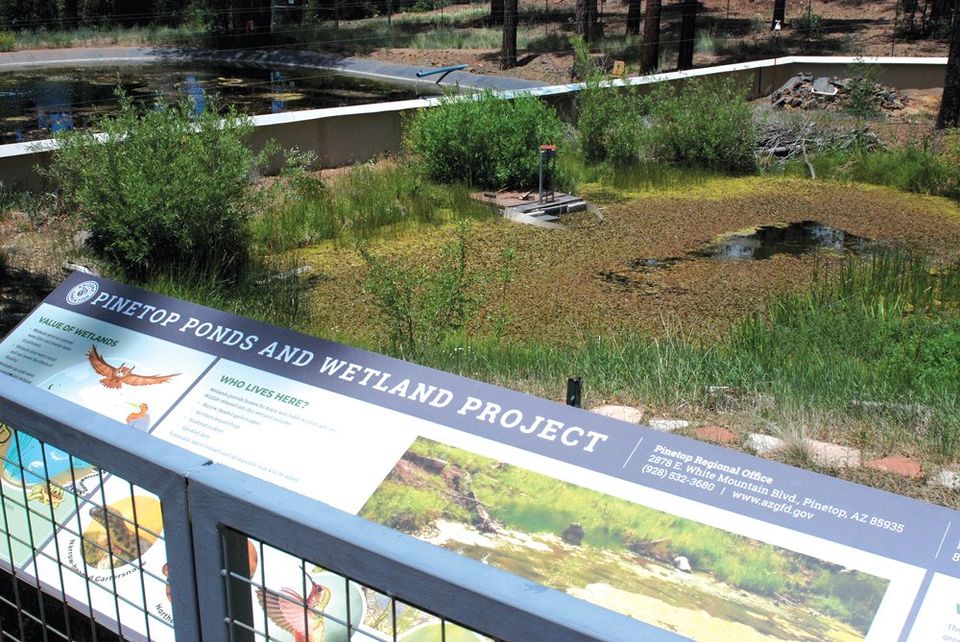
With the summer monsoon finally upon us (sort of), it sure is a welcome sight to see the ponds and marshes start to fill again after losing all of their winter runoff. None of the water holes were really overflowing this spring so a healthy monsoon storm season will not only lower chances of wildfire but, hopefully, even recharge the area wetlands and shallow aquifers dried up by our ongoing drought. As we learned, wetlands can soak up all of this monsoon rain now and slowly release it until the winter snows arrive.
As mentioned in a previous article, the Arizona Game and Fish Department renovated the historic fish hatchery at its Pinetop Regional Headquarters recently, building a ⅓ acre wetland along with two fishponds. The ponds and wetland were built immediately behind the Pinetop Regional Game and Fish Office at 2878 East White Mountain Blvd. Since most of the work was done with existing staff -- when time allowed – actually, construction crawled along for almost four years. However, the construction demonstrated how to build a small backyard type wetland and provided private landowners with abundant ideas and advice.
Construction was finished for the most part in 2015 but the native vegetation, much of it acquired from the Arboretum at Flagstaff -- with advice from their expert horticulturists -- was allowed to grow an entire season. The Arboretum provided many native flower plants used by pollinators as well as some uncommon plants like Arizona willow and Flagstaff penstemon, that enjoyed the fenced protection from grazing critters, like elk and livestock. The pond that the wetland area drains into also needed to be “broken in” and allowed to settle after construction.
After the pond and upper pools were stocked with hundreds of small native minnows, called speckled dace and bluehead suckers, both northern leopard frogs and narrow-headed garter snakes were introduced into the fenced wetland area known as a refugia. The area should provide all of the necessary ingredients for these animals to go through their entire life cycle, even though it is in a much smaller -- but protected -- area than a truly wild home range would have provided.
Recently, The Phoenix Zoo provided two male and two female (one probably very pregnant) adult narrow-headed garter snakes for translocation into the Pinetop wetland refugia in hopes they will breed and produce offspring that can be reintroduced into appropriate -- but unoccupied -- habitat in the wild. These snakes are currently listed as Threatened on the Endangered Species list so it is the goal of this project to make them more common, justifying their removal from the Endangered Species list. The Phoenix Zoo has been involved in active, behind-the-scenes, conservation work like breeding these snakes as well as working to recover black-footed ferrets, Mount Graham red squirrels, Chiricahua leopard frogs and other species.
The narrow-headed garter snake could be one of the most misunderstood snakes in the White Mountains as it is completely harmless to people but, because of its unique head shape, it appears to look like a small venomous rattlesnake. These snakes have splotches or spots which also make them look like a rattlesnake instead of stripes like most garter snakes but they never carry any rattles on their tails. More than 90% of the narrow-headed garter snake’s diet is small fish so it is always found near healthy streams with abundant minnow populations.
Even if these snakes are not a physical danger to humans, many of our folklore, customs and culture depict snakes as something less than a cuddly puppy and oftentimes as a symbol of evil. The Hopi Tribe is an exception as they have practiced ceremonies in August with snakes to encourage rain and the growth of their plants and their people. So, there are a variety of different traditions involving snakes that need to be respected. We certainly don’t intend to offend anyone with this article.
Some snakes can be harmful, if not deadly, to humans. The 13 species of rattlesnakes in Arizona fit this category. This does not, however, include any of the snakes in the garter snake family which eat smaller food items, including mice, frogs, eggs, chicks and sometimes other snakes.
So, the role of the narrow-headed garter snake in the web of life may not be as obvious or look as significant as one of the more charismatic megafauna -- like a mountain lion -- but that does not diminish its importance on the landscape. Many critters might have an insignificant impact on the food chain themselves, especially a diminutive male garter snake the size of a 12” Slim Jim but, what they lack in size is often made up in their sheer numbers, as the scale of their populations can surprise us most of the time. It’s difficult for us humans to think at that population scale (unless you are an insurance actuary, I guess) but that is the way Mother Nature works over a much wider landscape than even our most expansive ranches. Have you ever tried eating just a “litter” of 8 Slim Jims?
On a long-term population scale, you could easily say that these snakes have helped make young trout more wary when they are small and vulnerable to predation. This wariness carries through to adulthood when we consider it a challenge and triumph if we can outsmart these same fish with an artificial fly and fly rod.
Narrow-headed garter snakes are well known for eating lots of fish but, since they have to hunt them all down, it is likely the snakes will catch and consume the slowest individuals in the fish population. So, they aren’t as likely to actually control any small fish populations as they are to clean the sickest and weakest out of the schools of healthy fish. Removing these less-fit individuals in a bath of strong snake digestive acids neutralizes their afflictions and usually prevents their transmission to other individuals within the population while providing a source of nutrition for the snake. Like other predators out there, snakes are sanitizers!
Most of these garter snakes participate fully in the web of life -- either becoming an energy source for a successful predator like an osprey or raccoon or helping to fertilize the soil with a source of nitrogen and calcium if their body isn’t found by a predator or scavenger first. So, if you happen to spot one of these unique-looking snakes along the trail by the creek, you can assure yourself that you’re probably hiking in some of Arizona’s most intact habitats.
So, where can you maybe catch a glimpse of these interesting and rare snakes? The Black River and its tributaries are probably the best bet but the snake also occurs in the Blue River drainage in our area. Oak Creek, over by Sedona also had a population but that one could be dwindling like all of the others in the state.
Although there is a public viewing platform overlooking the wetland where the four Phoenix Zoo snakes were just released, behind the Pinetop Game and Fish Region I office, you would need to bring your binoculars with you to be able to see the snakes from the platform. Unfortunately, since these snakes are so rare, you cannot have them as a pet, like some other snakes (see Game and Fish regulations on possessing any wildlife).
The viewing platform at the Game and Fish office also has new interpretive signage, thanks to the Y Outdoors - Liz Wise Fund, which is dedicated to open space preservation and environmental education. Donations have been accepted in Liz’s name for these interpretive signs as well as a sign dedicated to all of the volunteers, like Liz, who started and maintained the TRACKS organization. A formal unveiling of the signage was planned but had to be cancelled due to the Covid-19 pandemic. However, the signs were still installed for the enjoyment of the crowds who use the trailhead area and the Hatchery Loop Trail as a connector to get to the Springs Trail in the White Mountain Trail System, maintained by the volunteer TRACKS organization.
To learn more about narrow-headed garter snakes or other Arizona reptiles and amphibians, try these sources:
A Field Guide to Amphibians and Reptiles in Arizona by Thomas C. Brennan; Andrew T. Holycross
A Peterson Field Guide to Western Reptiles and Amphibians (Peterson Field Guides) 3rd Edition by Robert C. Stebbins
http://www.reptilesofaz.org/
Or call your local Game and Fish Department office, Pinetop Region (928) 367-4281

